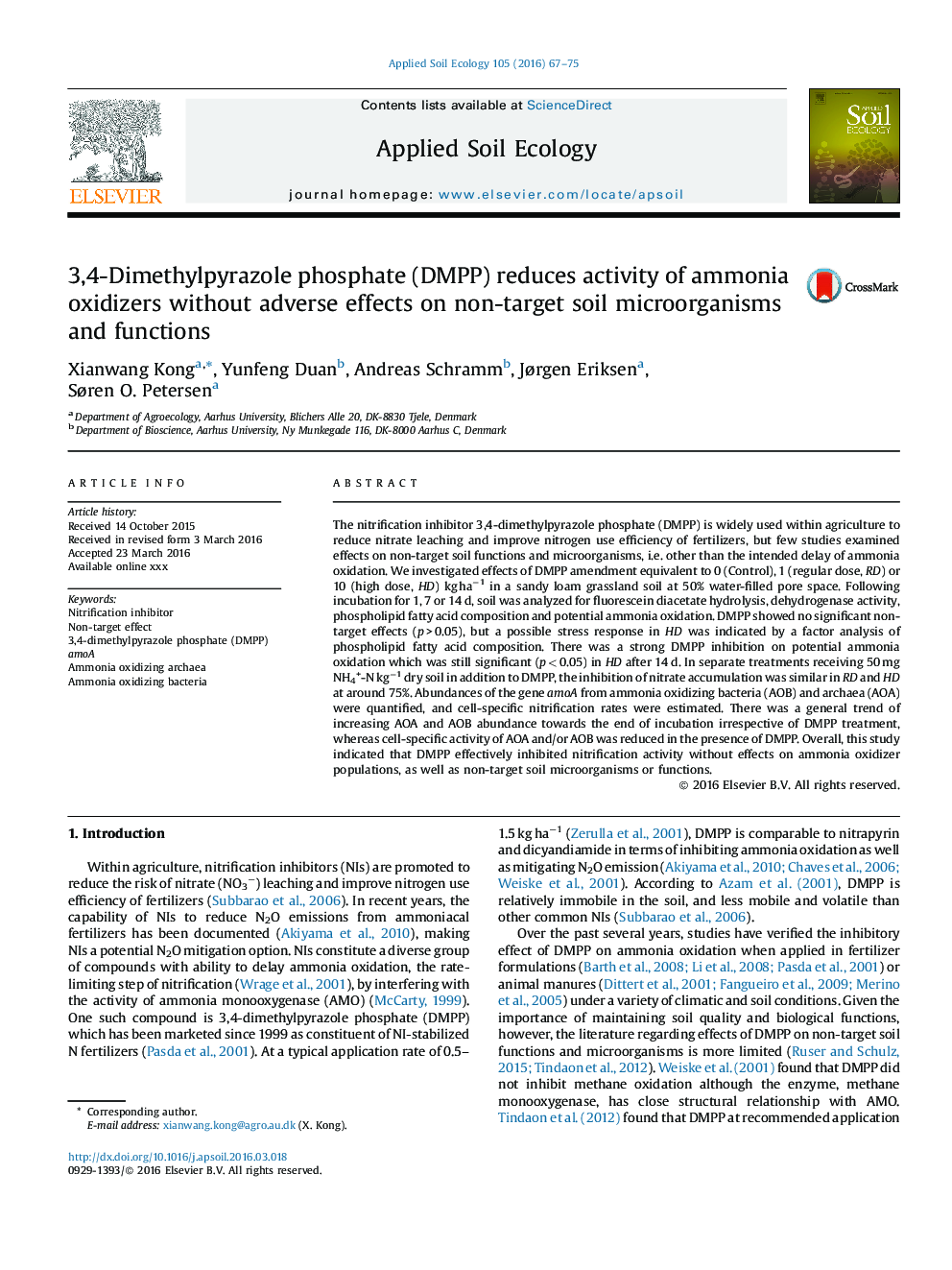| Article ID | Journal | Published Year | Pages | File Type |
|---|---|---|---|---|
| 6297743 | Applied Soil Ecology | 2016 | 9 Pages |
Abstract
The nitrification inhibitor 3,4-dimethylpyrazole phosphate (DMPP) is widely used within agriculture to reduce nitrate leaching and improve nitrogen use efficiency of fertilizers, but few studies examined effects on non-target soil functions and microorganisms, i.e. other than the intended delay of ammonia oxidation. We investigated effects of DMPP amendment equivalent to 0 (Control), 1 (regular dose, RD) or 10 (high dose, HD) kg haâ1 in a sandy loam grassland soil at 50% water-filled pore space. Following incubation for 1, 7 or 14 d, soil was analyzed for fluorescein diacetate hydrolysis, dehydrogenase activity, phospholipid fatty acid composition and potential ammonia oxidation. DMPP showed no significant non-target effects (p > 0.05), but a possible stress response in HD was indicated by a factor analysis of phospholipid fatty acid composition. There was a strong DMPP inhibition on potential ammonia oxidation which was still significant (p < 0.05) in HD after 14 d. In separate treatments receiving 50 mg NH4+-N kgâ1 dry soil in addition to DMPP, the inhibition of nitrate accumulation was similar in RD and HD at around 75%. Abundances of the gene amoA from ammonia oxidizing bacteria (AOB) and archaea (AOA) were quantified, and cell-specific nitrification rates were estimated. There was a general trend of increasing AOA and AOB abundance towards the end of incubation irrespective of DMPP treatment, whereas cell-specific activity of AOA and/or AOB was reduced in the presence of DMPP. Overall, this study indicated that DMPP effectively inhibited nitrification activity without effects on ammonia oxidizer populations, as well as non-target soil microorganisms or functions.
Keywords
Related Topics
Life Sciences
Agricultural and Biological Sciences
Ecology, Evolution, Behavior and Systematics
Authors
Xianwang Kong, Yunfeng Duan, Andreas Schramm, Jørgen Eriksen, Søren O. Petersen,
